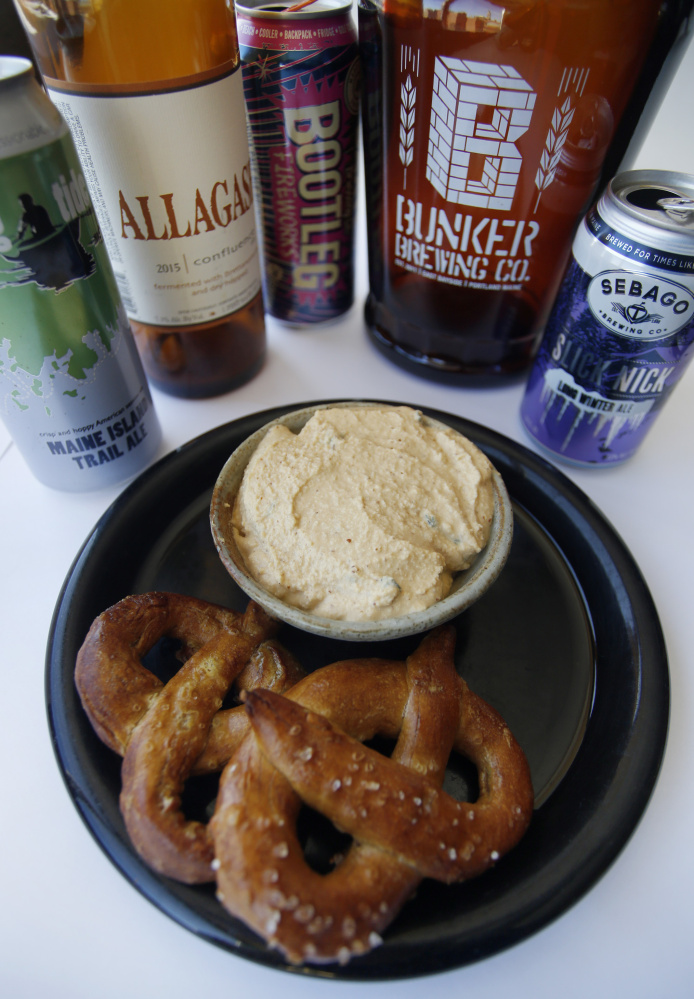The most energy efficient means of consuming a local beer is to have it poured directly from the brewer’s tap into a glass and down your gullet.
But busy lives, sadly, don’t always allow for leisurely afternoons spent in beer tasting rooms. That’s one reason my second fridge, aka the metal speed rack standing in my garage, houses a sampling of local brews. On New Year’s Eve, my husband was sharing both bottles and cans with a beer buddy visiting from Boston.
Their conversation focused on taste and style of boutique beers garnering a lot of press lately. Noticing the growing collection of recyclables, I asked if there were certain beers they preferred in cans versus bottles.
The question opened a container of worms as the conversation turned to which craft beer makers were spreading which claims about which beer can be made better or worse by its packaging. After exploring the online forums, I learned the factors at play here are style of beer, how it is to be stored (it’s widely accepted that sunlight does change beer, so cans offer better protection there), and how far from the source the beer is consumed.
I like beer, very much, but I’m not prepared to argue the finer points of how glass or aluminum chemistry plays with a beer nose, bouquet or finish, as there is simply no accounting for tastes.
But I can give you a few reasons consuming canned beer may be greener than drinking beer from bottles.
According to the Ball Corporation, which earned its household name with home canning jars, a business it spun off in 1993 en route to becoming the largest metal can supplier in the world, it takes less energy to produce aluminum cans than glass bottles; cans weigh less both empty and full, so it takes less fossil fuel to cart them around; and Americans are twice as likely to recycle cans as they are bottles.
The argument in favor of bottles is that the environmental costs involved in mining bauxite, a clay mineral comprising aluminum hydroxide, iron, titanium, sulphur and chromium among other things, outweigh the environmental costs of making glass from sand. Digging bauxite does not require tunnels (as with coal). But it does requires heavy digging equipment, and it generates tremendous dust.
That said, only 16 percent of new aluminum produced annually is used in the packaging industry (mainly cans and tin foil) since it recycles so well.
According to Heather Sanborn of Rising Tide Brewing Company, cans get the sustainability stamp when you factor in the paper packaging required to deliver bottles. There are labels, cardboard 4- and 6-pack holders and case boxes to consider.
Baxter Brewing Company in Auburn, which last year produced 4 million cans (no bottles) of beer, counts using cans made from 70 percent post-consumer recycled material and completely photodegradable 6-pack rings (not uncommon in the beer world) as two of its 11 overall corporate sustainability measures. (The other measures follow what other craft breweries in Maine are doing to conserve resources.)
According to marketing manager Adrienne Nichols, while using cans is a strategic green directive, Baxter is also marketing to drinkers who want to take beer with them while enjoying Maine’s outdoor activities. Cans take less human energy than bottles to lug around, too.
Sanborn agrees, noting that when you’re in a pack-in/pack-out situation at the beach, on a mountain or sailing where there are no trash or recycling options, cans are more convenient. “That’s why we put our Maine Island Trail Ale and our Cutter (Imperial IPA) in cans,” said Sanborn.
Rising Tide also offers its Gose German Wheat Ale in cans, but bottles five other year-round beers.
These are complicated issues to parse. You need to consider the life cycle of a product from start to end. Still, it seems that cans get the green light on this one. That said, carrying a growler in the back seat next to your reusable shopping bags should you happen to drive by a brewery is not a bad option either.
Christine Burns Rudalevige is a food writer, recipe developer and tester, and cooking teacher in Brunswick. She writes about feeding her family Maine seafood at familyfish.net. Contact her at cburns1227@gmail.com.
Send questions/comments to the editors.


